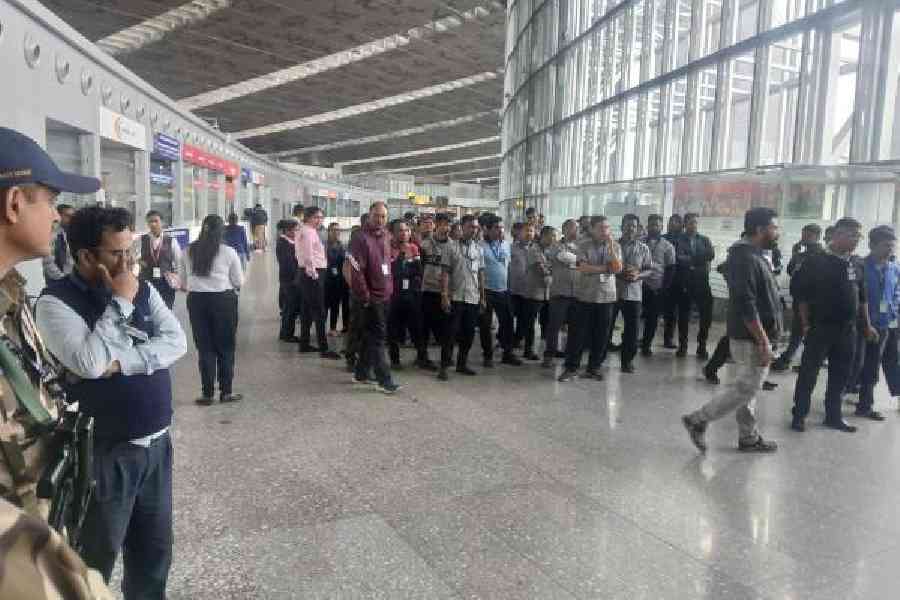 |
Whenever Nimisha Vijay thinks of the new home she will soon own in Wayanad, Kerala, she is transported to the picture-perfect world of a Yash Chopra film. The 2,000 sq feet plot faces Chembra Peak, one of the highest points of the Western Ghats. Look left and tea estates and deciduous forests are visible. The morning mist will sneak into her villa when she opens the windows.
Wayanad used to be a favourite weekend hangout for Vijay, a Bangalore-based freelance designer and her IT professional husband. It was a manageable six-hour drive away — green and serene. Last year, when the couple heard about a villa complex called Chembra Misty Villas being built there, they immediately bought one. “We already own a home in Bangalore. We wanted our second home to be a de-stressing pad, away from hustle and bustle,” she says.
The Chembra complex’s marketing pitch promises just that. Spread across a five-acre area, it offers villas, row houses and plots. Moreover, Vijay does not have to worry about dusting, cleaning and stocking the kitchen when she heads to her holiday home. “We offer housekeeping services, which includes the upkeep of every property and catering,” says P.A. Prem Kumar, partner, Wayanad Weekend Homes, which is developing the property. The homes are priced upwards of Rs 38 lakh and 90 per cent are sold, claims Kumar.
For many buyers, a second home of choice is not an apartment located on the 10th floor of some overcrowded high rise in the heart of the city. Rather, it’s a den of serenity in the hills, beaches, lakefronts and mustard fields not too far away from where they live. “Weekend homes boast a great natural setting to lure urban buyers,” says Suhas Kataria, founder, Realspace, a Mumbai-based real estate consultancy. “They also offer all amenities that city dwellers are used to — like a swimming pool, gym and jogging track,” he says.
 |
Om Ahuja, CEO, residential services, Jones Lang LaSalle India, the real estate consultants, says location sets the second home apart from the first. “The first home is usually located close to business districts and workplace hubs, where comfort and natural ambience are sacrificed in favour of daily commuting distance,” he explains. Vacation homes make up for this loss.
Yet second home construction projects are to be found not just in remote locations but also not very far from India’s metropolitan cities. According to Rohit Mago, managing director, Magsons Group, Delhi, some nine to 10 second home projects have sprung up around the national capital region and five to six around Bangalore.
Exactly how big the market for second homes is is not clear. In 2012, 30 million homes were in demand in Indian metros and tier-two towns. “The second home market is a big chunk of this, since most high income buyers have already taken care of the need for a first home,” says Rohit Gera, managing director, Gera Properties, Pune. But, as Arun Chitnis, assistant vice-president, marketing, Jones Lang LaSalle, points out, “It is not possible to put a figure to the second home market. What is a second home for some could be a first home to others.” Still, experts believe that the second homes market is growing by at least 20 per cent a year.
“We expect it to double in the next five years — as infrastructure improves in tier II towns and real estate rates shoot up further in cities,” says Kataria. The company gets about 100 queries for weekend homes every month, he claims.
Of course, the urban Indian has always had weekend homes. “The affluent class has always owned bungalows in places like Mussoorie and Mahabaleshwar,” says Gera. But what was once a niche market is now quickly turning into a come one, come all. “Weekend homes are no longer restricted to high-priced bungalows,” explains Gera. Instead, developers offer everything — from one-bedroom flats and studio apartments priced upwards of Rs 4 lakh to premium villas, row houses and penthouses. “This has been a game changer,” he adds.
Gera Properties recently rolled out a 224 resort-like apartment complex at Panjim, Goa, which boasts of a rooftop garden, a sprawling swimming pool and a hi-tech gymnasium. “About eight per cent of our buyers use their apartment as a weekend getaway,” says Gera. For these clients, the company offers a concierge service — which takes care of housekeeping and offers facilities like calling a cab, paying electricity bills and making travel bookings. “This service was a big draw for outstation buyers,” says Gera.
 |
| Peace and quiet: (From top) Chembra Misty Villas, Wayanad, Kerala; a bungalow at Project Elegant near Mumbai; and Gera Astoria, Panjim |
Kataria believes rising real estate costs and shrinking space in cities along with improved road connectivity has fuelled the growth in the vacation home market. “As property prices escalate in the cities, it’s had a spillover effect on the weekend home segment,” he explains.
Realspace works as a one-stop sales and marketing shop for property developers in Maharashtra. Currently, the firm is marketing 15 vacation projects located across Maharashtra for Disha Direct, Rhythm Residences in Lonavala, Mountain Willows in Manor and a 10-acre lifestyle villa project in Coonoor, a hill station in Tamil Nadu.
To make its marketing job easier, Realspace launched a website for weekend homes three years ago. “We have advertised 25 Maharashtra-based projects so far,” says Kataria.
As the demand for vacation homes grows — and destinations like Lonavala and Khandala become saturated — developers are offering out-of-the-box amenities to woo buyers. “All locations within a 100 to 150km radius of major city centres are being turned into weekend home destinations,” says Kataria.
Karjat, about 112km from Mumbai, is emerging as one of the new getaway hotspots. Project Elegant is one of the many weekend complexes under construction here. It promises to bring a slice of Spain to the foothills of the Sahyadris. The complex — spread over 13.5 acres — will have Spanish-style villas, bungalows, studio apartments and plots, along with the mandatory club, pool and park.
“Since all our homes will be used as temporary residences, we offer housekeeping services and have a food court in the complex. We also furnish the flats if required,” says Nandpal Vastar, director, Vastar Group, which is helming Project Elegant. While the studio apartments cost between Rs 9 and Rs 16 lakh, the Spanish villas are priced upwards of Rs 1.75 crore.
Vacation home buyers are also flocking to religious destinations. The Delhi-based Magsons Group has developed a 20-acre complex in Vrindavan that houses serviced apartments, villas and bungalows along with a resort, restaurants and shops. “Family holidays don’t mean visiting the grandparents anymore. Vacation homes are coming up in most destinations where people holiday,” says Rohit Mago, managing director, Magsons. A one-bedroom unit at the company’s Vrindavan complex costs Rs 25 lakh.
Despite the hoopla, some say that vacation homes aren’t exactly selling like hot cakes as yet. Kataria experienced that first hand when the company was marketing Mountain Willows, a 23-acre project at Manor in Maharashtra. On paper, Mountain Willows had everything going for it. Manor was just 100km from Mumbai. It’s green, clean and lies in the lap of the Western Ghats. Even then, the sprawling villas and 5,000 sq feet plots remained unsold.
Realspace went back to the drawing board to rejig its marketing pitch. An organic vegetable patch is now being added to every villa and plot in the complex. “The idea is that children who grow up watching the world from a high-rise balcony can now see how a tomato grows,” explains Kataria.
While such add-ons are no doubt attractive, what is really seducing urban India is the prospect of owning a second home that’s far from the madding crowd.










